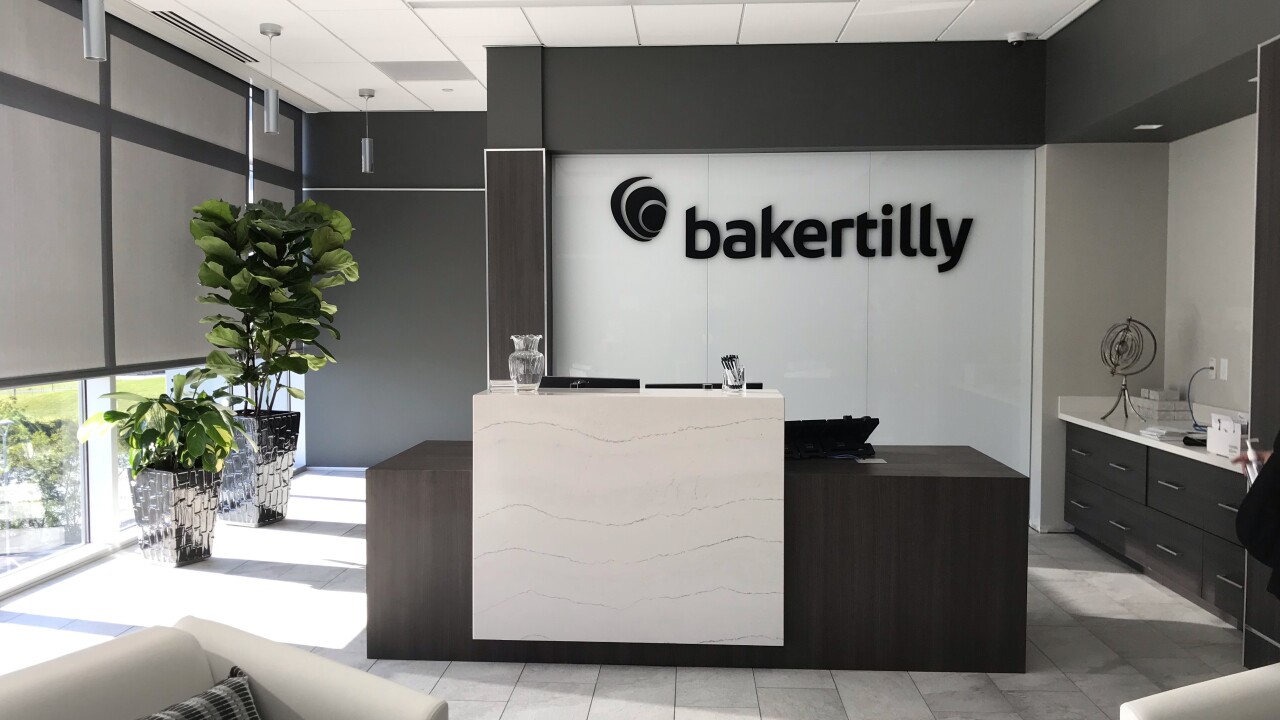It has been 10 years since the Bipartisan Budget Act introduced the Centralized Partnership Audit Regime. The program was intended to help the Internal Revenue Service audit partnerships more efficiently, but over the last decade, the IRS, taxpayers and practitioners have encountered numerous issues with CPAR, often resulting in administrative burden.
"CPAR impacts not only partnerships themselves, but also partners, who may be corporations or high-net-worth individuals," said Colin Walsh, principal and practice leader of Top 10 Firm Baker Tilly's tax advocacy and controversy services. "By its nature, CPAR is novel, widespread, misunderstood and controversial."
"BBA and CPAR are both used to refer to the same thing," according to Walsh. "The IRS calls it the BBA because that was the act that created it. Most practitioners call it CPAR."

The legislation it refers to made various changes to the Internal Revenue Code that made it significantly easier for the IRS to audit a partnership, make changes to that partnership's tax return and then make an assessment as a result of those changes. It was a direct response to the prior regime, which was called TEFRA, where the IRS had a very difficult time auditing partnerships. TEFRA was named after the Tax Equity and Fiscal Responsibility Act of 1982, but the partnership audit provisions changed with the Bipartisan Budget Act.
"The initial legislation was at the end of 2015, but it was prospective," explained Walsh. "Even though it came into effect in 2015, the first income tax return for which these rules were required was the 2018 Form 1065. Congress decided that they would give a little bit of time to prepare and gear up and adjust operating agreements. But in 2018, when they filed, they would be subject to the new rules if they got audited."
Then the 2018 returns, especially the more complicated ones that got selected for exam, were filed in the subsequent fall, so the 2018 returns selected for audit were filed in the fall of 2019, and selected for audit in 2020.
"When COVID hit, the IRS had a policy of bit selecting new returns for exam, so they decided that since everyone was suffering they would hold off on rolling out CPAR," he continued. "So we, as tax controversy professionals, were geared up in 2020 to start these CPAR audits, but because of COVID, 2020 quickly turned into the spring and summer of 2023."
There was a convergence of two factors, according to Walsh: "We had this legislative program that was sitting on the shelf for a few years, but in addition to the legislation, for the first time in decades, the IRS was given funding with which it could implement the program. The IRS was struggling through the pandemic and even before the pandemic for lack of resources. So in 2023 and 2024 the IRS built internally a partnership audit task force. They were hiring folks, developing technology and processes to go out and audit partnerships. Baker Tilly's partnership clients were getting selected for audit under these new procedures, and we spent a good chunk of 2024 administering these exams and starting to see, finally, a decade after the BBA became law, actual exams under this regime."
The Inflation Reduction Act provided $80 billion to be paid out over 10 years, and the partnership audit task force was one of the things that the IRS intended to spend the money on.
"But of course, what was $80 billion became $60 billion because some of the funding was clawed back, and that became $40 billion, and now we've hit a pause button. All of us who work in this space are very curious to see what impact the lack of funding is going to have on the audit of partnerships," said Walsh. "We're actively working with our clients on BBA/CPAR audits right now. This has been a decade in the making — we were on the precipice of really beginning this. The plane was just starting to take off, but now it's back on the runway. And we don't know when the plane is going to take off again or if it will take off at all."
"Whenever anything is new, it's bound to be a little bit of a bumpy road ahead," he said. "It's hard for Congress when they write a statute and it's hard for Treasury when they issue regulations to contemplate the complexity of administering something like this. So this first year of the rollout of CPAR it has been a little bit bumpy in terms of rolling out the new rules. There are new forms, new Internal Revenue Manual provisions, and a centralized approval process for any changes that are made that agents have to coordinate with this other group. And there is some subjectivity as to how the law applies. So it's a little bit more art than science at this point as we stumble our way through the first year, but I think both on the IRS end and on taxpayers end, we learned a lot."
"For example, the first time we filled out a power of attorney under CPAR, it was rejected because it wasn't filled out correctly," said Walsh. "We had to change the wording to align with the way the IRS wants it. But now we won't have that problem anymore because we've done it."
The real question now is about how the law will be enforced, according to Walsh.
"It doesn't really matter if these rules exist if no one is there to conduct the audits," he said. "The story is now more of financing than it is for the law, because the law has now existed for a decade. We just haven't seen the administration of that law."





